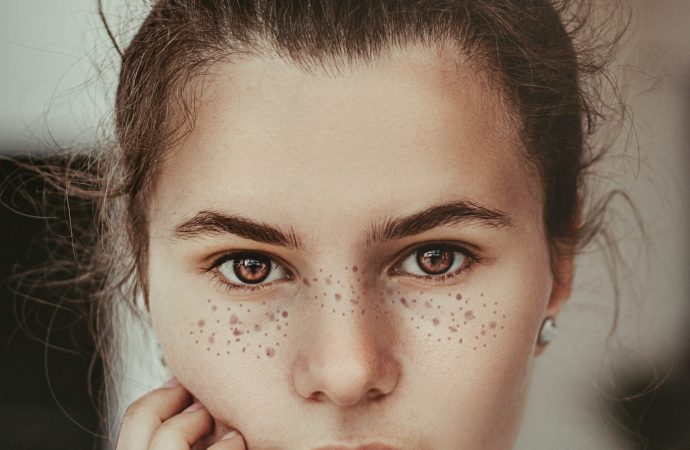Introduction to Acne-Prone Skin Acne-prone skin is a type of skin that is more likely to develop acne breakouts. There are many factors that can contribute to this, including genetics, hormones, and certain medications. Acne-prone skin can be difficult to treat, but there are many products and treatments available that can help. If you have
Introduction to Acne-Prone Skin
Acne-prone skin is a type of skin that is more likely to develop acne breakouts. There are many factors that can contribute to this, including genetics, hormones, and certain medications. Acne-prone skin can be difficult to treat, but there are many products and treatments available that can help.
If you have acne-prone skin, it is important to take extra care when cleansing and moisturizing. Choose gentle, non-comedogenic products that won’t clog your pores. Be sure to wash your face twice daily with a mild cleanser and use a light, oil-free moisturizer. Avoiding harsh scrubbing or picking at your skin will also help to prevent breakouts.
There are many acne treatments available over the counter or by prescription from your dermatologist. These include topical creams, gels, or lotions containing benzoyl peroxide or salicylic acid. Prescription oral medications such as antibiotics may also be necessary in some cases. If you have severe acne, you may need to undergo laser treatment or other procedures performed by a dermatologist.
The Best Products for Acne-Prone Skin
Acne-prone skin can be a real pain to deal with. The good news is, there are plenty of products out there that can help. In this guide, we’ll share some of the best products for acne-prone skin, as well as some tips on how to use them.
One of the most important things you can do for acne-prone skin is to keep it clean. That means cleansing it twice a day with a gentle cleanser that won’t strip away its natural oils. We recommend using our Purifying Face Wash, which contains salicylic acid to help exfoliate and reduce inflammation.
Once your skin is clean, it’s time to apply a treatment. If you’re dealing with active acne, reach for our spot treatment gel. It contains benzoyl peroxide to kill bacteria and dry up blemishes fast. For a more all-over approach, try our Clarifying Treatment Serum, which contains retinol to unclog pores and prevent breakouts.
In addition to these treatments, be sure to use a moisturizer designed for acne-prone skin. Our Oil-Free Moisturizer is lightweight and non-greasy, making it perfect for those with oily or combination skin. It also contains glycolic acid to help keep pores clear.
Finally, don’t forget about sunscreen! Even if you don’t plan on spending time
The Best Tips for Acne-Prone Skin
Acne-prone skin can be a challenge to treat, but with the right products and tips, you can get your skin looking and feeling its best. Here are some of the best tips for acne-prone skin:
1. Choose the right cleanser: A gentle, non-drying cleanser is key for acne-prone skin. Avoid harsh cleansers that can strip the skin of its natural oils, as this can actually make breakouts worse.
2. Exfoliate regularly: Exfoliating helps to remove dead skin cells that can clog pores and lead to breakouts. Look for an exfoliator that contains salicylic acid or glycolic acid to help fight acne.
3. Use a light, oil-free moisturizer: Moisturizing is important for all skin types, even acne-prone skin. Just be sure to choose a light, oil-free moisturizer to avoid clogging pores.
4. Apply a spot treatment: When you have a breakout, apply a spot treatment containing benzoyl peroxide or salicylic acid to help clear it up quickly.
5. Don’t picking at your skin: It may be tempting to pick at your blemishes, but this can actually make them worse and lead to scarring. So resist the urge!
How to Get Rid of Acne Scars
Acne is a common skin condition that can cause pimples, blackheads, and whiteheads. Acne can also lead to scarring. The good news is that there are treatments available that can help reduce the appearance of acne scars.
There are two main types of acne scars: hypertrophic and atrophic. Hypertrophic scars are raised and thick, while atrophic scars are sunken and thin. The best treatment for each type of scar will vary depending on the individual.
One common treatment for both types of scars is laser therapy. Laser therapy can help to improve the appearance of acne scars by breaking down the scar tissue and stimulating new collagen production.
Other treatments for acne scars include dermabrasion, microneedling, and chemical peels. Dermabrasion involves using a rotating brush to remove the top layer of skin, while microneedling uses small needles to create micro-wounds in the skin that promote healing. Chemical peels use chemicals to remove the top layer of skin and stimulate new growth.
There are also a number of home remedies that can help to fade acne scars over time, including using aloe vera gel, coconut oil, raw honey, apple cider vinegar, lemon juice, and baking soda. These ingredients all have calming and healing properties that can help to diminish the appearance of acne scars over time.
Conclusion
Acne-prone skin can be a challenge to treat, but with the right knowledge and products it is possible to keep breakouts under control. We hope that this guide has been helpful in showing you how to take care of your acne-prone skin properly. With the proper care, you can restore balance in your skin and feel confident about your appearance once again. So take some time out to find the best skincare routine for yourself, and don’t forget to follow up with us on our social media page for more tips on treating acne-prone skin!

















Leave a Comment
Your email address will not be published. Required fields are marked with *